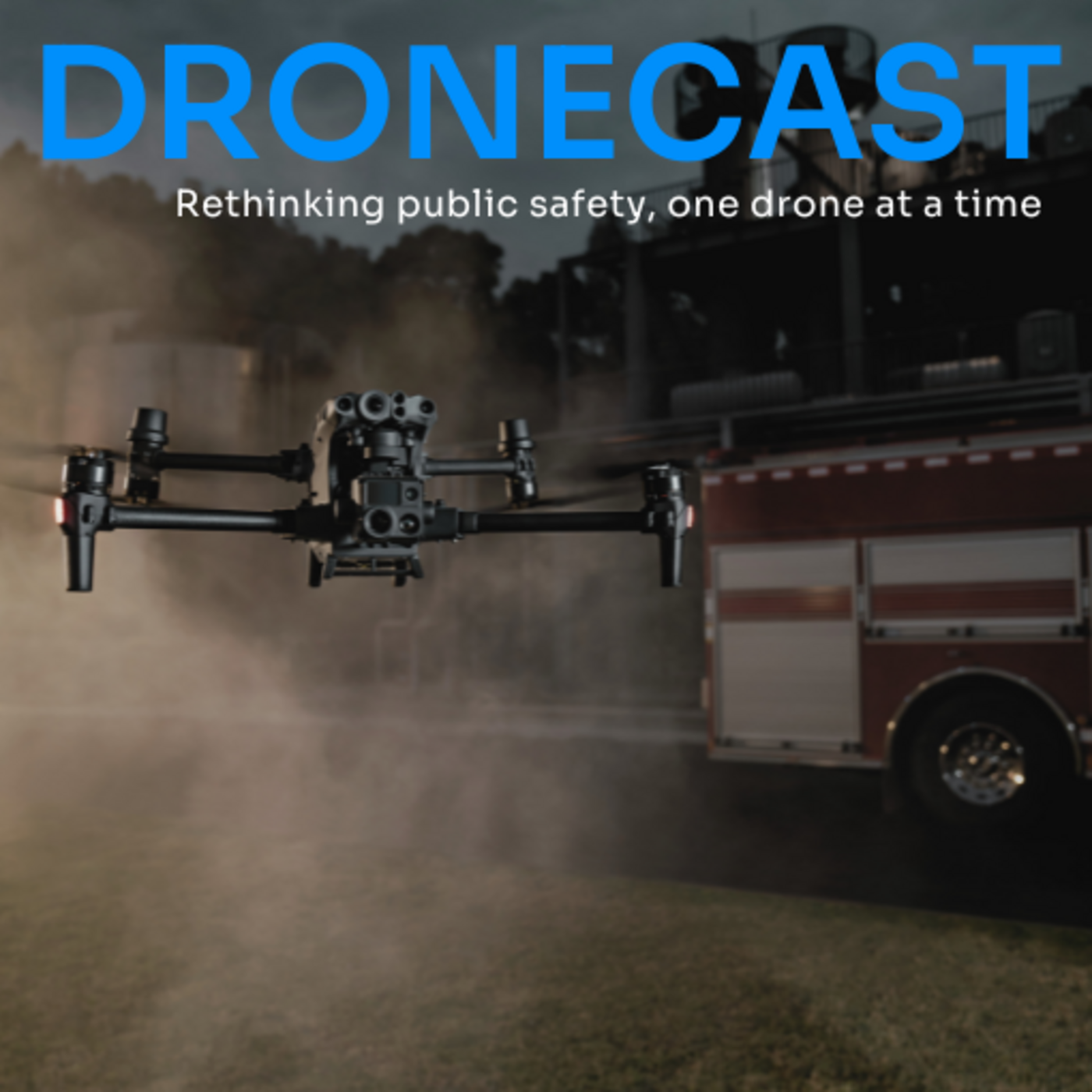Decoding Part 108: The Future Framework for BVLOS Operations
October 14, 2025

In Part 1 of this exciting DroneCast conversation, host Joe Kearns sits down with Matt Sloane, Co-founder and Chief Strategy Officer at Skyfire AI, to unpack the FAA’s proposed Part 108 rule, a comprehensive framework for routine Beyond Visual Line of Sight (BVLOS) drone operations. Matt explains how this proposal could reshape drone regulations across public safety, commercial, and defense sectors, from standardizing BVLOS approvals to encouraging autonomy and organizational accountability.
This episode sets the stage for what’s to come in Part 2, where Matt and Joe will go even deeper into the implications of autonomy, AI integration, and the evolution of DFR (Drone as First Responder) programs as Part 108 moves toward finalization.
In “Decoding Part 108: The Future Framework for BVLOS Operations,” DroneCast host Joe Kearns talks with Matt Sloane, Co-founder and Chief Strategy Officer at Skyfire AI, about the FAA’s proposed Part 108 rule, a pivotal step toward normalizing Beyond Visual Line of Sight (BVLOS) drone operations across the U.S.
Part 108 isn’t yet an official rule; it’s a proposal from the FAA designed to create a scalable, risk-based framework for BVLOS operations, replacing today’s fragmented system of case-by-case waivers under Part 107. The concept evolved from the BVLOS Aviation Rulemaking Committee (ARC) and the FAA’s broader Drone Integration Concept of Operations (ConOps). The Notice of Proposed Rulemaking (NPRM) titled “Normalizing UAS BVLOS Operations” was published on August 7, 2025 (Docket FAA-2025-1908), with the public comment period closing October 6, 2025. The FAA is now reviewing feedback and drafting a final rule, with no confirmed release date.
At its core, the NPRM proposes:
- Two authorization tiers for BVLOS flights, lower-risk permitted operations and higher-risk certificated operations, linked to aircraft type and mission risk.
- A predictable pathway for routine BVLOS missions like package delivery, inspection, agriculture, and public safety.
- A clarified right-of-way framework for drones versus crewed aircraft, emphasizing cooperative equipage and electronic visibility.
- A shift from individual pilot liability to organizational accountability, requiring roles like operations supervisors and flight coordinators with formalized training, reporting, and safety oversight.
- A structured path for airworthiness acceptance and standardized operational approvals, replacing the current patchwork of waivers.
Matt unpacks how these proposed changes could reshape public safety drone programs, especially Drone as First Responder (DFR) models. He explains why Part 108 represents a “step change for the industry,” why the FAA’s preference for autonomous operations is a paradigm shift, and how AI can ease the cognitive load on pilots rather than replace them.
With his deep background, spanning 14 years in media with CNN, EMS leadership, and aviation experience, Matt offers an informed, boots-on-the-ground perspective on how Part 108 could transform daily operations once finalized.
What You’ll Learn:
- The true nature of Part 108 as a proposed rule, not yet finalized
- What the FAA’s NPRM (Normalizing UAS BVLOS Operations) proposes and why it matters
- The timeline and key milestones from the May 2025 Drone Integration ConOps to the Oct 2025 comment deadline
- The two-tiered structure for BVLOS operations: permitted vs. certificated
- Why this marks a step change for the drone industry
- How autonomy and AI are driving the next era of flight operations
- What organizational accountability means for public safety and commercial operators
- How the FAA plans to define right-of-way and airworthiness under the new framework
- What will change for operators once the rule is adopted—training, roles, and recordkeeping
- How this proposal sets the stage for routine, scalable BVLOS missions across industries
Helpful Links:
- Fill out the Audience Form here.
- Explore more episodes and insights on the official DroneCast website: https://www.dronesense.com/dronecast
- Ready to launch or enhance your drone program? Get Started with DroneSense today!
- Parrot, ANAFI UKR Tech Sheet: https://5n8jp.share.hsforms.com/2oWfNvmGLRCeKUWcJGtFbBg
Episode Highlights:
- [10:20] Step Change for the Industry
Matt calls Part 108 the biggest regulatory shift the drone industry has ever seen. Building on the foundation of Part 107, this new rule acts as “107 on steroids,” paving the way for long-range inspection, delivery, and advanced public safety operations like search and rescue. - [16:04] Autonomy Paradigm Shift
Matt explains the FAA’s unprecedented statement that it doesn’t anticipate human pilots flying drones under Part 108. This marks a paradigm shift toward full autonomy, especially as platforms like Skyfire AI and DroneSense already integrate semi-autonomous functions in their operations. - [21:51] The AI Hesitancy Factor
While AI can handle many pilot responsibilities, Matt acknowledges the industry’s concern about automation “taking over jobs.” Instead, he views it as a tool that offloads cognitive load, allowing pilots to focus on decisions AI can’t make. - [17:00] From Rooftop Observers to Optical Detection
Matt discusses the coming end of “rooftop observers” for agencies once their COAs expire and the likely transition toward radar or optical detection systems, signaling a major evolution in visual deconfliction practices. - [18:00] Organizational Accountability
Under Part 108, the FAA will hold organizations—not individual pilots—responsible for compliance. This change brings a new layer of professionalism and oversight to public safety drone programs.
Episode Resources:
- Matt Sloane on LinkedIn
- Joe Kearns on LinkedIn
- Get started with DroneSense
- Parrot, ANAFI UKR Tech Sheet: https://5n8jp.share.hsforms.com/2oWfNvmGLRCeKUWcJGtFbBg
Dronecast: Rethinking Public Safety, One Drone at a Time Podcast is handcrafted by our friends over at: fame.so
Previous Guests include: Matt Rowland, Jason Burnside
Check out our 3 most downloaded episodes:
Previous Guests include: Matt Rowland, Jason Burnside
Check out our 3 most downloaded episodes: